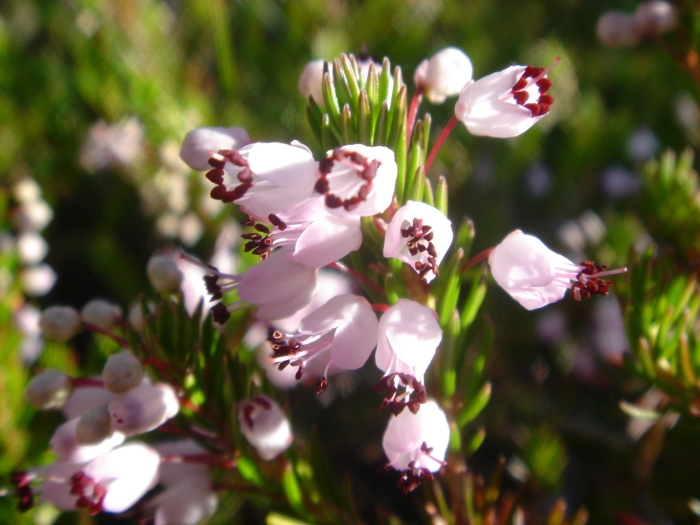Cornish Heath
(Erica vagans)
Cornish Heath (Erica vagans)
/
/

Ghislain118 http://www.fleurs-des-montagnes.net
CC BY-SA 3.0
Image By:
Ghislain118 http://www.fleurs-des-montagnes.net
Recorded By:
Copyright:
CC BY-SA 3.0
Copyright Notice:
Photo by: Ghislain118 http://www.fleurs-des-montagnes.net | License Type: CC BY-SA 3.0 | License URL: https://creativecommons.org/licenses/by-sa/3.0 | Uploader: Ghislain118 | Publisher: Wikimedia Commons | Title: Erica_vagans_1.jpg |











































































Estimated Native Range
Summary
Erica vagans, commonly known as Cornish Heath, is an evergreen shrub native to heathlands and coastal areas in Europe. It typically grows to a height of 1 to 3 ft (30 to 90 cm) and is characterized by its dense, bushy form. The inflorescence is a slender, leafy spike with numerous small, bell-shaped flowers that are pink or lilac with protruding brown stamens, blooming from July to September. The flowers are quite showy and attract bees and butterflies.
Cornish Heath is valued for its hardiness and the extended flowering period which adds color to gardens late into the summer. It is often used in rock gardens, as ground cover, or in borders. The plant thrives in acidic to neutral soils and can be grown in containers using ericaceous compost to ensure the correct soil pH. It requires full sun to part shade and medium water, with well-drained soil being essential to prevent root rot. While generally disease-resistant, it can suffer from root diseases if the soil is not well-drained. Cultivars offer a variety of flower colors, including white, pink, mauve, and purple, allowing gardeners to choose according to their landscape design.CC BY-SA 4.0
Cornish Heath is valued for its hardiness and the extended flowering period which adds color to gardens late into the summer. It is often used in rock gardens, as ground cover, or in borders. The plant thrives in acidic to neutral soils and can be grown in containers using ericaceous compost to ensure the correct soil pH. It requires full sun to part shade and medium water, with well-drained soil being essential to prevent root rot. While generally disease-resistant, it can suffer from root diseases if the soil is not well-drained. Cultivars offer a variety of flower colors, including white, pink, mauve, and purple, allowing gardeners to choose according to their landscape design.CC BY-SA 4.0
Plant Description
- Plant Type: Shrub
- Height: 1-1.5 feet
- Width: 1-1.5 feet
- Growth Rate: Moderate
- Flower Color: Pink, White
- Flowering Season: Summer, Fall
- Leaf Retention: Evergreen
Growth Requirements
- Sun: Full Sun, Part Shade
- Water: Medium
- Drainage: Medium, Fast
Common Uses
Bank Stabilization, Bee Garden, Border Plant, Butterfly Garden, Deer Resistant, Fragrant, Groundcover, Low Maintenance, Potted Plant, Rabbit Resistant, Rock Garden, Salt Tolerant, Showy Flowers
Natural Habitat
native to heathlands and coastal areas in Europe
Other Names
Common Names: Wandering Heath, Fransk Klockljung, Wander-Heide, Urze
Scientific Names: , Erica vagans, Erica vaga, Erica decipiens, Erica vagans var. alba, Erica urceolaris, Erica anthura, Erica didyma, Erica forskalii, Erica manipuliflora subsp. anthura
GBIF Accepted Name: Erica vagans L.